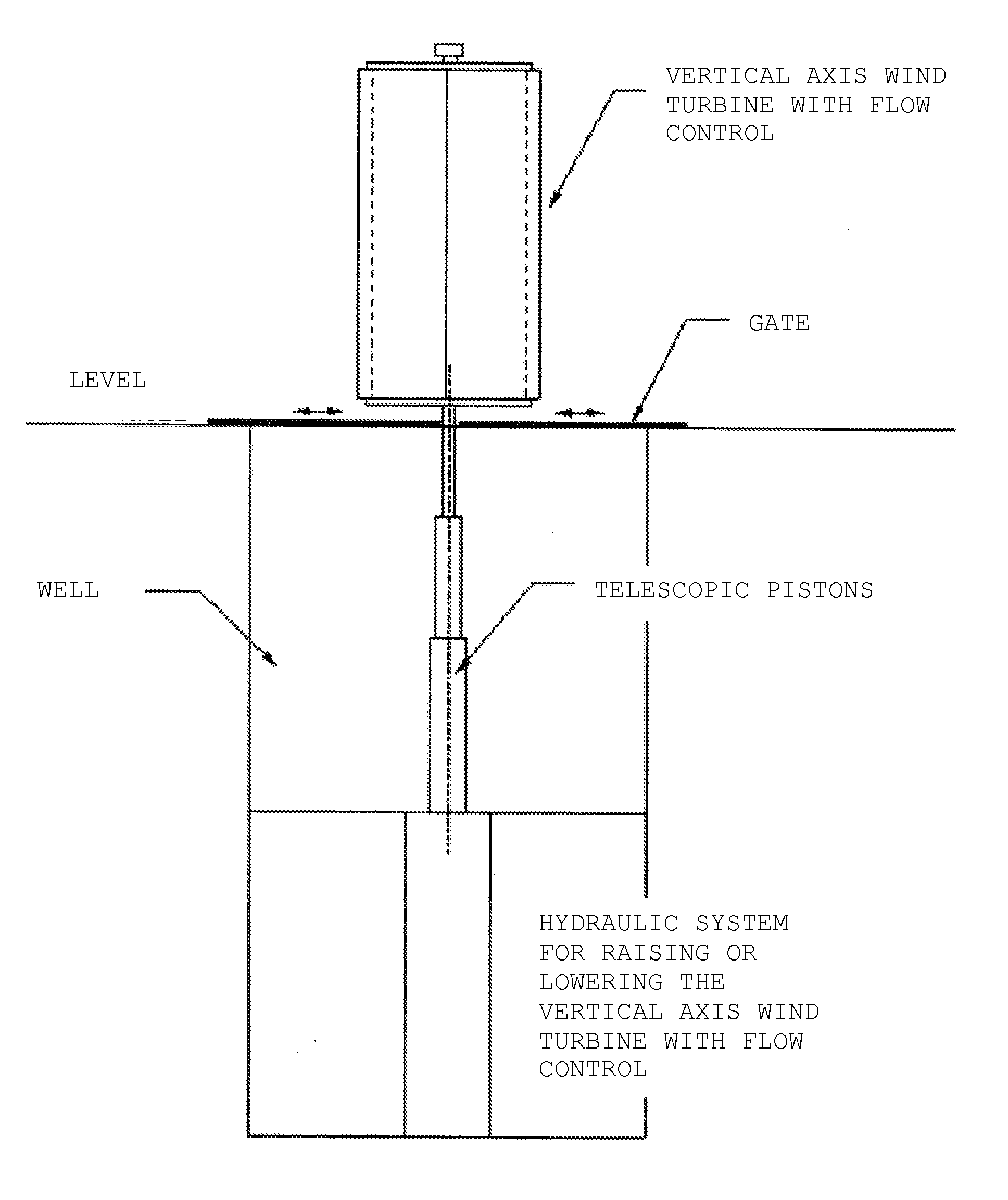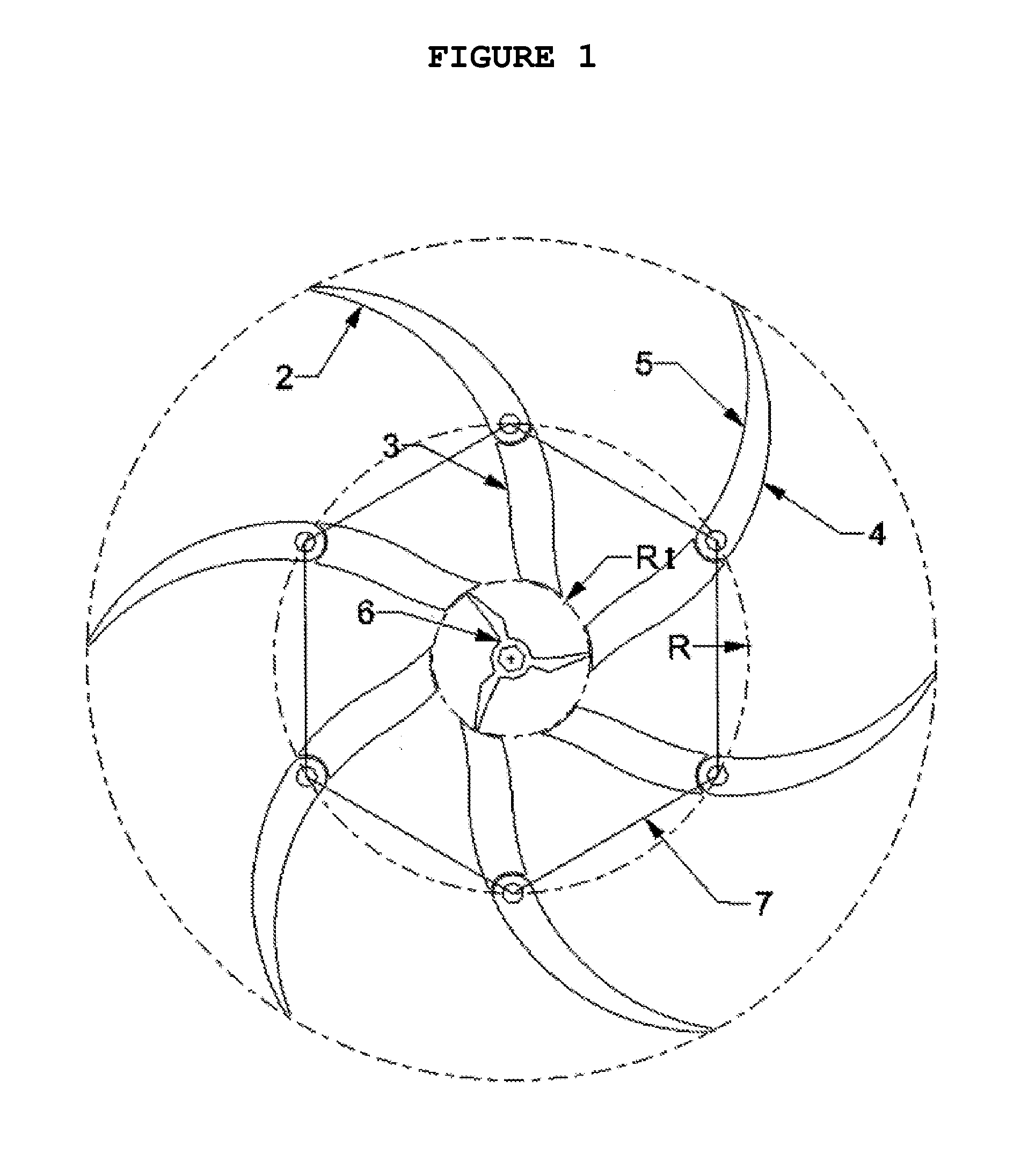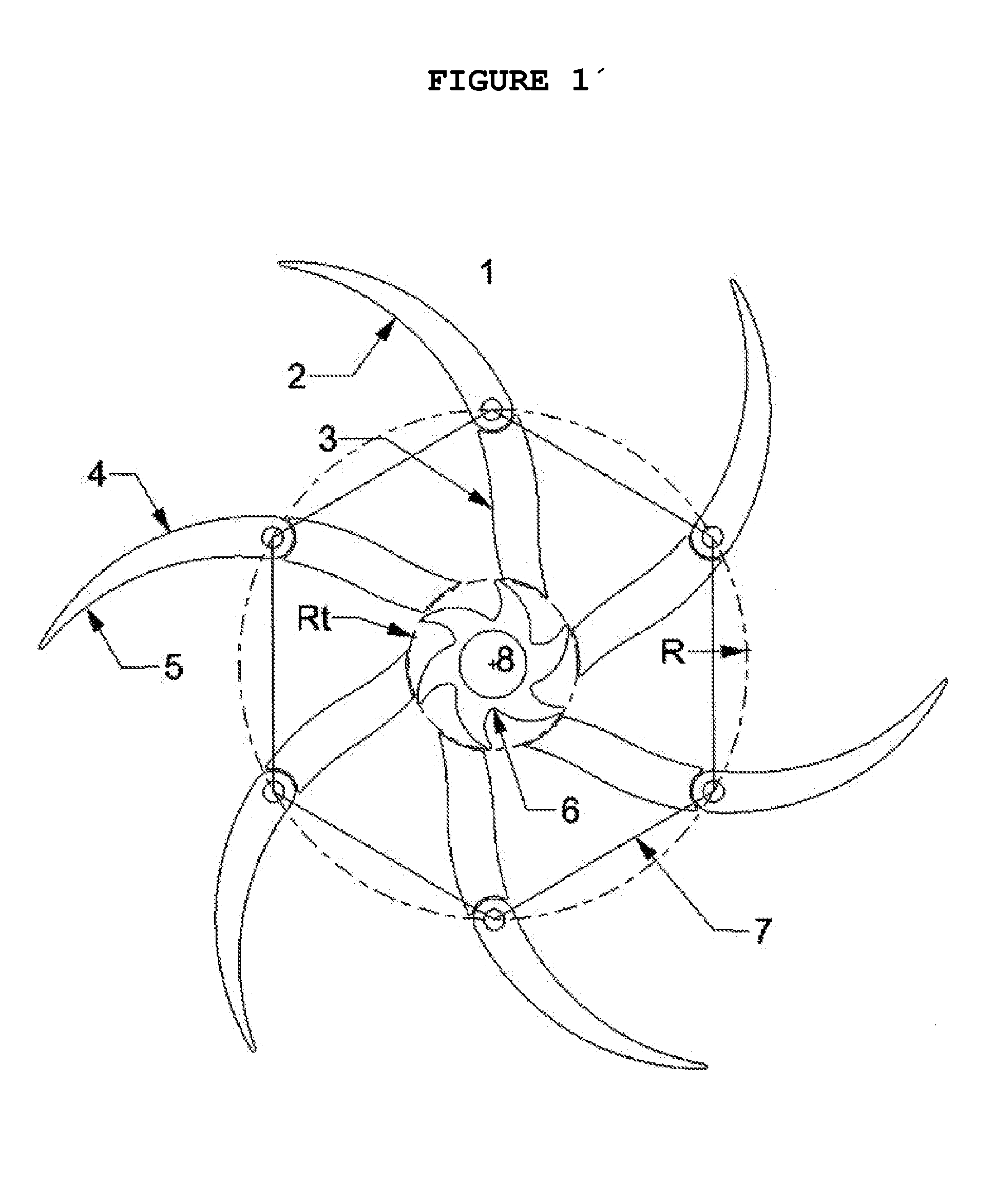The traditional differential systems Savonius and Darrieus generate turbulence and varying tensions on the rotor ending in parasitic forces and vibrations that limit performance and
system control.
In addition the
system is noisy and slow contributing not much to the overall performance.
The primary
motor drive above provides a substantially reduced drag on a fluid flow, and an increased torque output, compared with the engines or main turbines of the prior art, but the main differences in relation with the object of the present invention is that the wind turbine of U.S. Pat. No. 7,083,382 is a direct action apparatus without
airflow enhancer with many
moving parts that reduce speed and performance, it has a complex mechanism exposed to wear by
erosion and
lubrication issues resulting in a noisy and slow equipment showing a poor overall performance.
The
radial turbine is completed with a cover, which rests on a plate or bracing beams of the walls of the nozzles, said turbine may be applied to capture the
kinetic energy of the air or water in motion, the main differences between the present invention and the object of the Spanish publication 2310965 are that this design has no flow
enhancer and comprises movable structures in the rotor which generate
noise, wear,
lubrication issues and
exposure to
abrasive agents, said device provides a poor overall performance to the
system and much complication in relation with maintenance as it is a moveable device that activates with each rotation; its structure determines much
energy loss resulting unpractical at snowy areas, it also does not allow a complete closure in case of extreme winds either.
However, the relationship between the amount of energy that can be obtained with today's means and the economic and environmental cost of installing the devices for
processing have prevented significant penetration of this type of energy.
Pelton turbines have the
disadvantage of requiring large height differences (hydraulic jumps) for converting hydraulic energy into electrical energy and lack of fluid flow control.
Francis turbines lack of fluid flow control.
The anchoring system operates at a predetermined depth, which makes it impossible to vary in depth changes of flow in water, the anchor is unidirectional or allows the
water flow only in one-way.
The
patent application publication GB 2,486,697 relates to a power generation equipment such as a turbine for generation of
electricity from wave and river flows comprising a support structure on the
river bed or body, a floating energy generator and a
crankshaft to move a belt, this power generator has a direct system without
enhancer with insulation problems difficult to solve, with no
automatic routing and high
operational costs, having costly transmission lines with risk of breakage and accidents.
The generator is located under the level of water presenting problems of isolation and transmission, only operating with fluids at high speed, wherein the tangential speed of the rotor is similar to liquid flow speed.
This turbine is a differential force operating mechanism and accelerates the output flow by narrowing the major
nozzle; the system is complicated and maintenance costly, and is exposed to
cavitation due to
sediment dragging.
No improvement regarding performance or increase the flow received by the
propeller, substantially, it is a rotor system inefficient and fragile wherein operation depth cannot be adjusted.
The system is difficult to anchor and direct and it is only suitable for one-way currents.
It is a
horizontal axis, direct action system without flow enhancer having movable vanes, subjected to great wear besides being noisy that provides no performance benefits as it locates out of the water surface and the attained height is minimum.
It has a power generator exposed to
moisture hard to access for repairs.
This is a complex and low performance system due to the loss of energy by raising the
water column by direct action without a water flux
concentrator.
It is difficult to position and unstable.
Fixed by rollers or other
electromagnetic system allows rotation of the group around an imaginary or real geometric axis, it is a low performance system as it is a direct action device, it evidences a flow turbulence as it operates in a dense medium like water, power is lost by increasing the volume of the
water column in the center of the equipment.
This is a system that has insulation and maintenance difficulties if used in water.
This is a differential action system using propellers of variable curvature; the generator is under the water surface with risk of
moisture and filtrations; it has a variable
propeller exposed to
erosion, it represents an expensive and fragile mechanism that is not self positionable.
It represents a differential action system with the generator included at the end of the rotor vanes, its use as a hydraulic turbine is costly and shows a poor performance, it is difficult to isolate and in case of repair it is necessary to move the entire system.
Anchoring is complicated and unstable in a watercourse; it has an electric mechanism exposed to currents.
This system represents a
horizontal axis turbine which can be used only on the water surface; it is not suitable for
deep sea currents, anchoring is difficult, positioning is cumbersome, it is costly and not automatic.
 Login to View More
Login to View More  Login to View More
Login to View More 


